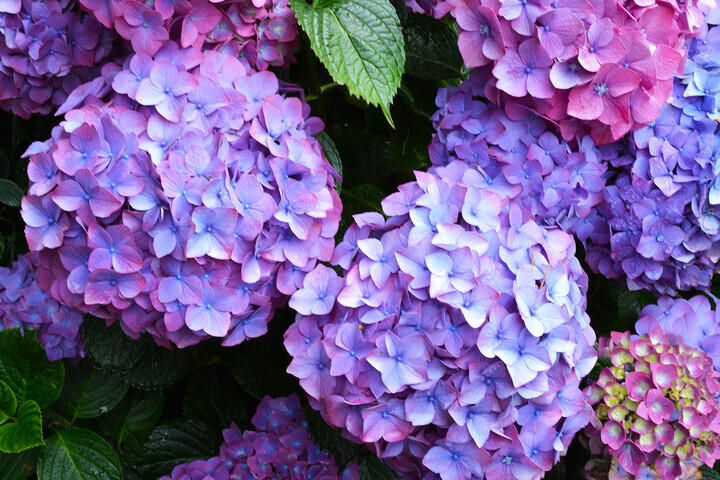These easy-to-grow shrubs just need a little care and they'll provide your garden with gorgeous blooms all season long.
Hydrangeas are shrubs that boast huge, vibrant clusters of small florets that bloom from late spring until fall and are incredibly easy to grow. Their ease makes them a popular choice among those with green thumbs and those who are new to gardening, alike. But despite that ease it's still possible for home gardeners to make mistakes with hydrangeas. Here are five mistakes you might be making with this flowering shrub—and how to correct them.

You're not planting hydrangeas in well-drained soil.
Ryan McEnaney, communications specialist for Bailey Nurseries, says, "You've got to give your hydrangea a comfortable home to settle down in or they can struggle." Hydrangeas prefer "well-drained soil that is rich in nutrients," McEnaney says, adding that heavy clay and sand-like soils aren't ideal for this plant. However, you can add gypsum to clay to aid with drainage, and peat moss or sand to allow for more water retention, he explains.
You're giving hydrangeas too much sun.
Hydrangeas love morning sun and afternoon shade, and the farther south you get, the more shade hydrangeas will need, says McEnaney. "If you live in zone 4, you can get away with almost full sun," he says. "But if you live in zone 7 to 9, you really want to restrict the sun exposure to a few hours in the early morning to avoid scorching the leaves and blooms."
You're pruning your hydrangeas in the fall.
Hydrangeas should never be pruned in the fall. Why? "Hydrangeas set flower buds for the following season in fall, so if you cut it back, you are cutting off all of the blooms," explains McEnaney. Instead, hydrangeas should be pruned in the spring—preferably past Father's Day, if you can wait that long. "It may not be ideal to keep the leafless stems up in the garden, but you want to be sure you're not cutting off any old wood that is dormant and late to come back, because you'll be removing your blooms for early in the season," he says.
You're over-fertilizing your hydrangeas.
If you're fertilizing your hydrangeas weekly, you are fertilizing them too often. "Adding fertilizer weekly can add too much nitrogen to the soil, which can actually slow bloom production," McEnaney says. Instead, he recommends fertilizing hydrangeas as the plant is "first waking up" in the spring—and one more time in mid-July, as its buds are blooming. "That extra energy will really help with getting more blooms."
You're watering your hydrangeas too much.
"Hydrangeas really like well-drained soil—not too wet, not too dry," says McEnaney. While newly planted hydrangeas need more water, established plants need less. "The best rule of thumb is just to get your fingers a little dirty," he says. "Stick your finger in the soil past the first knuckle. If it's dry, give the hydrangea a good soak. If it's moist or wet, leave it alone. Depending on your natural rainfall and summer temperatures, this could mean watering every day or two, or it could mean that you only water once a week."